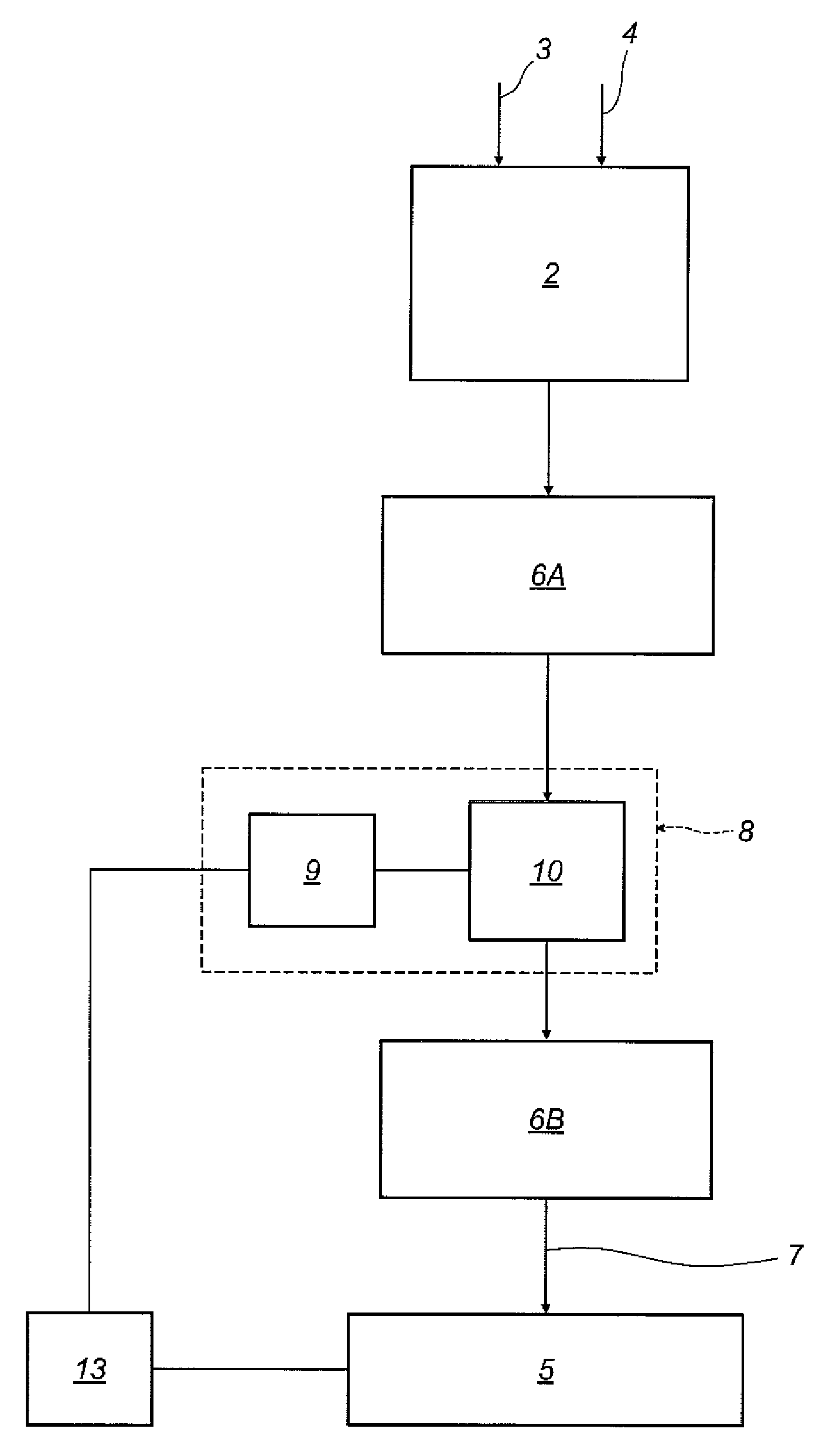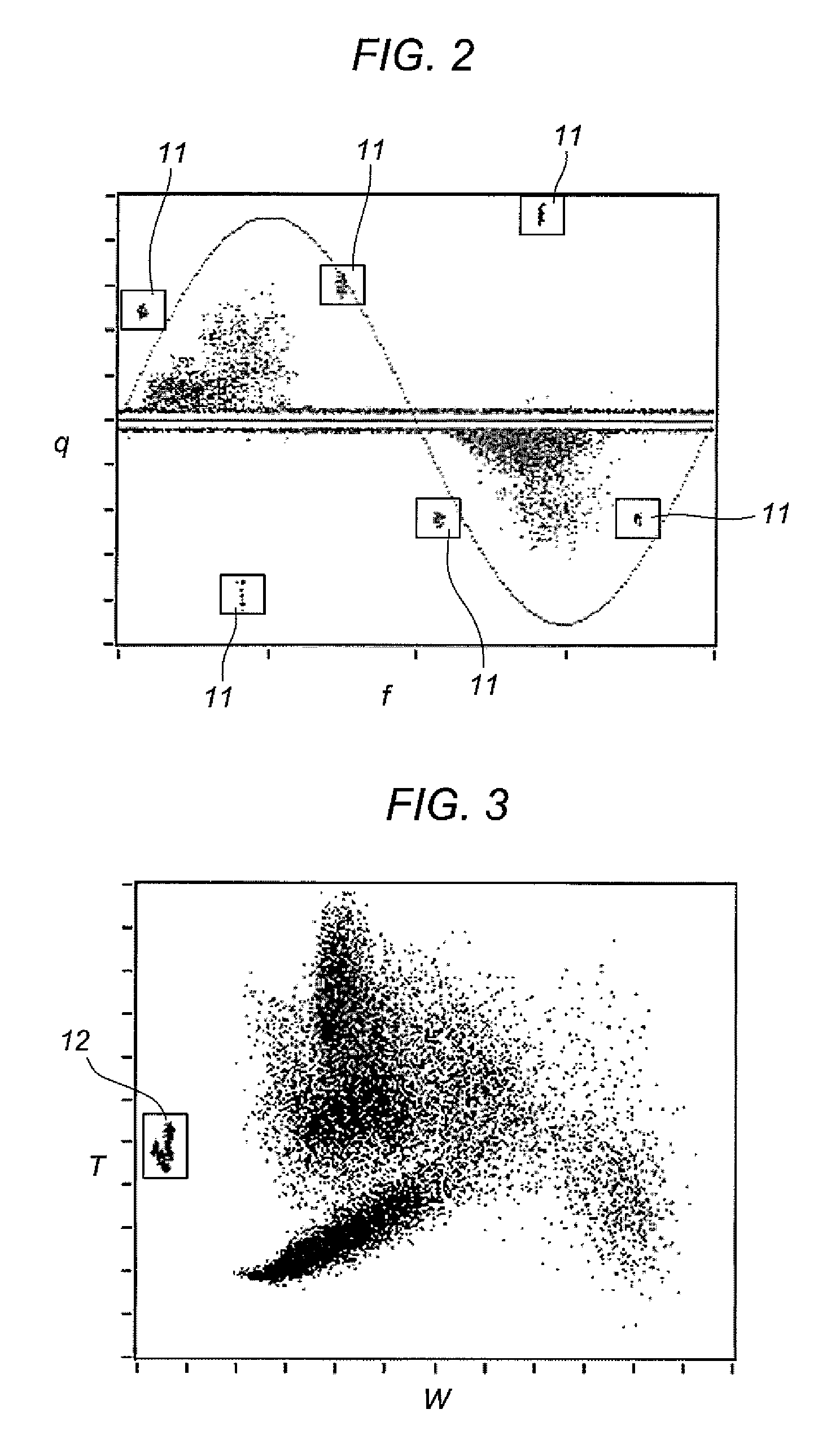Instrument and method for detecting partial electric discharges in an electric apparatus
a technology of partial electric discharge and instrument, which is applied in the direction of instruments, testing circuits, resistance/reactance/impedence, etc., can solve the problems of not yet becoming a standard industrial tool for planning maintenance and/or substitution of high-voltage electrical components, detection and subsequent processing of partial discharges for diagnostic purposes, and substantially limited partial discharges, etc., to achieve simple and convenient use, the effect of optimizing the calculation resources
- Summary
- Abstract
- Description
- Claims
- Application Information
AI Technical Summary
Benefits of technology
Problems solved by technology
Method used
Image
Examples
Embodiment Construction
[0062]The numeral 1 in the accompanying drawings denotes an instrument for detecting partial electric discharges in an electric apparatus.
[0063]The electric apparatus is any electric apparatus comprising an insulating system to be diagnosed by measuring and analysing partial discharge activities taking place within the insulating system itself.
[0064]More specifically, during measurement of the partial discharges, it is assumed that the electrical apparatus (or rather, the insulating system of the electrical apparatus) is subjected to alternating current voltage (50 Hz in the example illustrated).
[0065]The fact that the electrical apparatus is subjected to alternating current voltage (typically sinusoidal) makes it possible to assign to each signal detected the value of a phase parameter given by the phase of the voltage applied to the electrical apparatus at the instant the signal is detected and hence representative of the value of the voltage applied to the electrical apparatus at...
PUM
 Login to View More
Login to View More Abstract
Description
Claims
Application Information
 Login to View More
Login to View More - R&D
- Intellectual Property
- Life Sciences
- Materials
- Tech Scout
- Unparalleled Data Quality
- Higher Quality Content
- 60% Fewer Hallucinations
Browse by: Latest US Patents, China's latest patents, Technical Efficacy Thesaurus, Application Domain, Technology Topic, Popular Technical Reports.
© 2025 PatSnap. All rights reserved.Legal|Privacy policy|Modern Slavery Act Transparency Statement|Sitemap|About US| Contact US: help@patsnap.com



